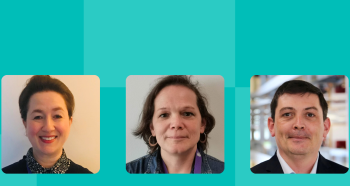 As we celebrate the arrival of the North American sixth edition, we look back on how this edition came to be. We, (Martha Altieri and Ginny Blasi) have been involved with the series since the early 80s. First using it in our classes, and then joining the North American Cambridge Classics Project (NACCP) whose purpose for the last 40 years is to support Latin teachers who use The Cambridge Latin Course (or CLC) however possible. Since 2005, we have been overseeing its mission. In addition to our own thoughts, much of what we are sharing comes from the introduction to the second edition of the Cambridge Latin Course Teachers’ Manual Unit 1 (Phinney. PhD. 1983).
As we celebrate the arrival of the North American sixth edition, we look back on how this edition came to be. We, (Martha Altieri and Ginny Blasi) have been involved with the series since the early 80s. First using it in our classes, and then joining the North American Cambridge Classics Project (NACCP) whose purpose for the last 40 years is to support Latin teachers who use The Cambridge Latin Course (or CLC) however possible. Since 2005, we have been overseeing its mission. In addition to our own thoughts, much of what we are sharing comes from the introduction to the second edition of the Cambridge Latin Course Teachers’ Manual Unit 1 (Phinney. PhD. 1983).

In the late 1970s, Ed Phinney PhD, who was the Chairman of the Department of Classics, U Mass, Amherst and an early enthusiast of CLC, connected with the manager of the college and exhibits department at Cambridge University Press in New York. He was hoping that American teachers would have a chance to offer suggestions for the revision of the CLC then being planned in the UK. Pat Story, Deputy Director of the Cambridge School Classics Project, was very happy to have American (US and Canada) teachers input. This marked the beginning of a 52-year collaboration across the pond.
In the summer of 1980, David Morton, Director of the CSCP, Pat Story and Rosemary Davison, Education Editorial Director at Cambridge, visited the United States and met with North American teachers during sessions at the American Classical League Institute, and the New England Classical Institute and Workshop.
Ed was very instrumental in both these meetings as well as in involving other teachers:
“I had written to all teachers of the CLC in North America known personally to me and collected a large file of written suggestions which I passed on to Rosemary Davidson. Correspondence continued between teachers and me and eventually the burden became so great that the New York office of Cambridge inaugurated the CLC newsletter, the first issue of which appeared in March 1982.”
Ed then describes how both the American edition came into being as well as the origins of the North American Cambridge Classics Project.
“Interest among North American teachers in the revision reached a feverish pitch. The CSCP and Cambridge responded by proposing a separate North American edition, and they engaged me to adapt and edit the revised British edition for you by teachers on this side of the Atlantic.”
Ed’s adaptation was the beginning of addressing the needs and methodologies of American teachers which allowed CSCP to respond to the disparate requirements.
“North American teachers, for example, preferred generally, a more classificatory approach to Latin instruction than seemed the custom in Britain. They wanted, particularly, reference grammars, for the students’ texts that presented noun inflections in the order traditional to the United States i.e. nominative, genitive, dative, accusative, and ablative. They wanted teachers’ manuals that address the problems which they faced, especially the need to correlate the CLC syllabus with that of the ATP achievement test in Latin (College Board). They wanted (in fact desperately needed) suggestions for relating vocabulary to English or Romance derivatives. Finally, they wanted in these manuals more suggestions for planning and teaching the course to students older than the group targeted in Britain.”
Part of the legacy the NACCP summer workshops and much of the continued support for CLC teachers was modeled by Ed’s long-term involvement with teacher training programs and workshops at UMass and at Tufts University as well as maintaining contact with neighboring high school and middle school teachers who used the CLC.
“With this experience, although I was, personally, wholly committed to the “Cambridge cultural and inductive approach” to reading Latin, I knew well that the North American teachers needed guidance in adapting the CLC to the interest, varying abilities and different ages of their students, and in adapting the culturally oriented CLC to the demands of administrators and parents, who wanted Latin taught primarily as preparation for the achievement test in Latin or to aid vocabulary building in English.”
And now in the twenty-first century as we embrace the new and updated sixth edition of the Cambridge Latin Course, Ed Phinney’s words still ring true:
“I believe that the Cambridge Latin Course, especially in its new North American edition is admirably designed to meet the current objective of second language studies in North America: to train students in the history of their language, while simultaneously training them, not only in the historical background of their own culture and civilization, but also in the history, successes, mistakes of an internationally minded people, if ever there was one – the Romans. The historically based episodes in the long and interesting Latin narrative that is the core of the Cambridge Latin Course takes students on a cultural and international journey from cosmopolitan Pompeii to ancient Britain, to the mercantile depot, called Alexandria, and finally to Rome, where people of all nationalities and skills melded, for better or worse, in the first “globally aware” society of the west. These same narratives teach students Latin, the most dominant of the languages that shaped English. When the curricular of our schools and colleges are becoming increasingly crowded, the strategic value of a textbook that fulfill two major educational objectives simultaneously is not to be questioned.”

Stan Farrow kindly shared this photo of Ed Phinney from 1989. He says:
“It was taken at a summer workshop for Cambridge Latin Course teachers in Ontario, held at Kingston in August. At the ACL earlier that summer, Ed had been prominent on the program, “plugging” the CLC and discussing its approach to the teaching of Latin. Pat Bell thought it would be amusing to get a t-shirt for Ed and present it to him when he was one of the leaders at the summer seminar. So in this photo, taken after the presentation, he is modelling his new identification t-shirt.”
From our earliest days with the second edition pamphlets, we have loved how easily and enthusiastically our students got involved with the storyline. Amazingly, while the storyline has stayed consistent, it has only gotten better with time. We love seeing how the course has both expanded to be more inclusive of women in Roman times as well as shifting the lens to include people of all statuses and circumstances.
With the sixth edition, much of the cultural information is now told by the characters through first person narrative. Having the characters put the culture information into a personal perspective will draw the student in. In addition, the cultural sections have been expanded to include essential questions and thinking points which encourage the students to go beyond the text.
Over the years Cambridge and NACCP have always worked together to respond to advances in teaching methodologies as well as topics in current research. We look forward to continuing to provide teachers with the information and training necessary to be successful with the new sixth edition.





